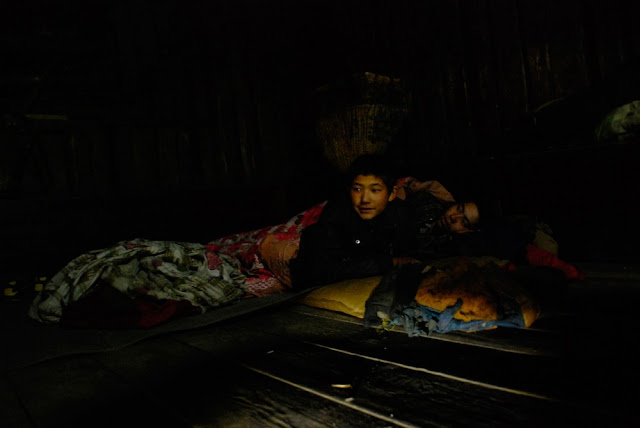Al Jazeera looks at porters facing steep odds as world
celebrates 60th year of the first ascent of Mount Everest.
celebrates 60th year of the first ascent of Mount Everest.
Arpan Shrestha Last Modified: 28 May 2013 12:24
Solukhumbu, Nepal - Twenty-year-old Parshuram Thalung finished school in the fifth grade. As the eldest of the seven siblings, he became a porter to support his family, thereby joining a legion of men and women in Nepal who literally bear the burden of every bid to scale the world's highest peak Mount Everest.
Carrying heavy loads up high altitudes - from tents to gas cylinders - the porters are the unsung foot soldiers behind every expedition. But sixty years after the peak was first scaled, they still rarely occupy the spotlight and their back-breaking hard work is barely recognised.
Porters are commonly exploited and discriminated against. The business is unregulated. The trade unions have eroded, and brokers now decide who gets to carry what and for how much.
Hiking the challenging terrain with the best mountain gear and a small backpack is exhausting - but porters often make the journey without heavy clothing and sturdy footwear, while carrying loads of 50-70 kilograms on average.
Some porters even carry large wooden planks that can weigh up to 150 kilograms.
There are legal restrictions, such as a maximum carry weight and a minimum age, but in reality, these regulations go largely unenforced. Their daily expenses hover around $11 a day, while they make about $14.
Many porters are pessimistic about their future, complaining that profits from tourism rarely trickle down to their level.
Children as young as 12 often work as porters, although the legal minimum age is 16.
They regularly carry loads of up to 70 kilograms.
At times they are required to carry more as regulations are largely unenforced.
In recent years, girls as young as 16 have migrated to Lukla near Mount Everest
from nearby villages to search for work.
Porters hit the sack after dinner at a shelter setup by Tyangboche Monastery.
Sleeping in cramped rooms where they can hardly move is more the norm.
Night shelters are mostly bare rooms with plastic windows, forcing porters to sleep on the floor. Some porters are still reported to take shelter in caves higher up in the mountains.
A porter carrying LPG cyclinders takes a break at Tyangboche while returning from a campsite further up the Mount Everest base camp trail.
Twenty-year-old Lakpa Chhechi Sherpa wants to summit peaks someday, and hopes the porter business could lead him there. But, he says, pay is very low, and he is
worried about the job's effects on his health.
For all the hard work they do, the porters make about $14 per day.
Porters are often referred to as the backbone of the Nepalese tourism industry.
Their work is essential to run local businesses, but they are often victims of
exploitation and discrimination.
The hands of 20-year-old Parshuram Thalung bear the brunt of hard physical labour.
Wooden planks weigh from 130-150 kilograms, and their sheer size makes movement challenging in an environment where the air is thin and the landscape is rugged.
Ang Dendi Sherpa, 16, is convinced that young people like him cannot benefit from
working as porters. He is currently learning Korean and hopes to migrate.
Most porters are pessimistic about their future, saying profits from tourism bypass them.
Great Photos by : Arpan Shrestha - Al Jazeera















No comments:
Post a Comment